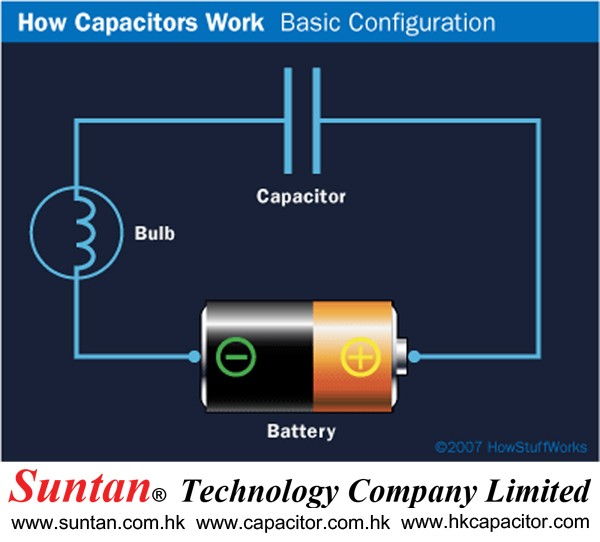Su Suntan Capacitor Circuit
In an electronic circuit, a capacitor is shown like this:

©2007 HowStuffWorks
When you connect a capacitor to a battery, here's what happens:

- The plate on the capacitor that attaches to the negative terminal of the battery accepts electrons that the battery is producing.
- The plate on the capacitor that attaches to the positive terminal of the battery loses electrons to the battery.
Once it's charged, the capacitor has the same voltage as the battery (1.5 volts on the battery means 1.5 volts on the capacitor). For a small capacitor, the capacity is small. But large capacitors can hold quite a bit of charge. You can find capacitors as big as soda cans that hold enough charge to light a flashlight bulb for a minute or more.
Even nature shows the capacitor at work in the form of lightning. One plate is the cloud, the other plate is the ground and the lightning is the charge releasing between these two "plates." Obviously, in a capacitor that large, you can hold a huge amount of charge!
Let's say you hook up a capacitor like this:
Here you have a battery, a light bulb and a capacitor. If the capacitor is pretty big, what you will notice is that, when you connect the battery, the light bulb will light up as current flows from the battery to the capacitor to charge it up. The bulb will get progressively dimmer and finally go out once the capacitor reaches its capacity. If you then remove the battery and replace it with a wire, current will flow from one plate of the capacitor to the other. The bulb will light initially and then dim as the capacitor discharges, until it is completely out.
In the next section, we'll learn more about capacitance and take a detailed look at the different ways that capacitors are used.